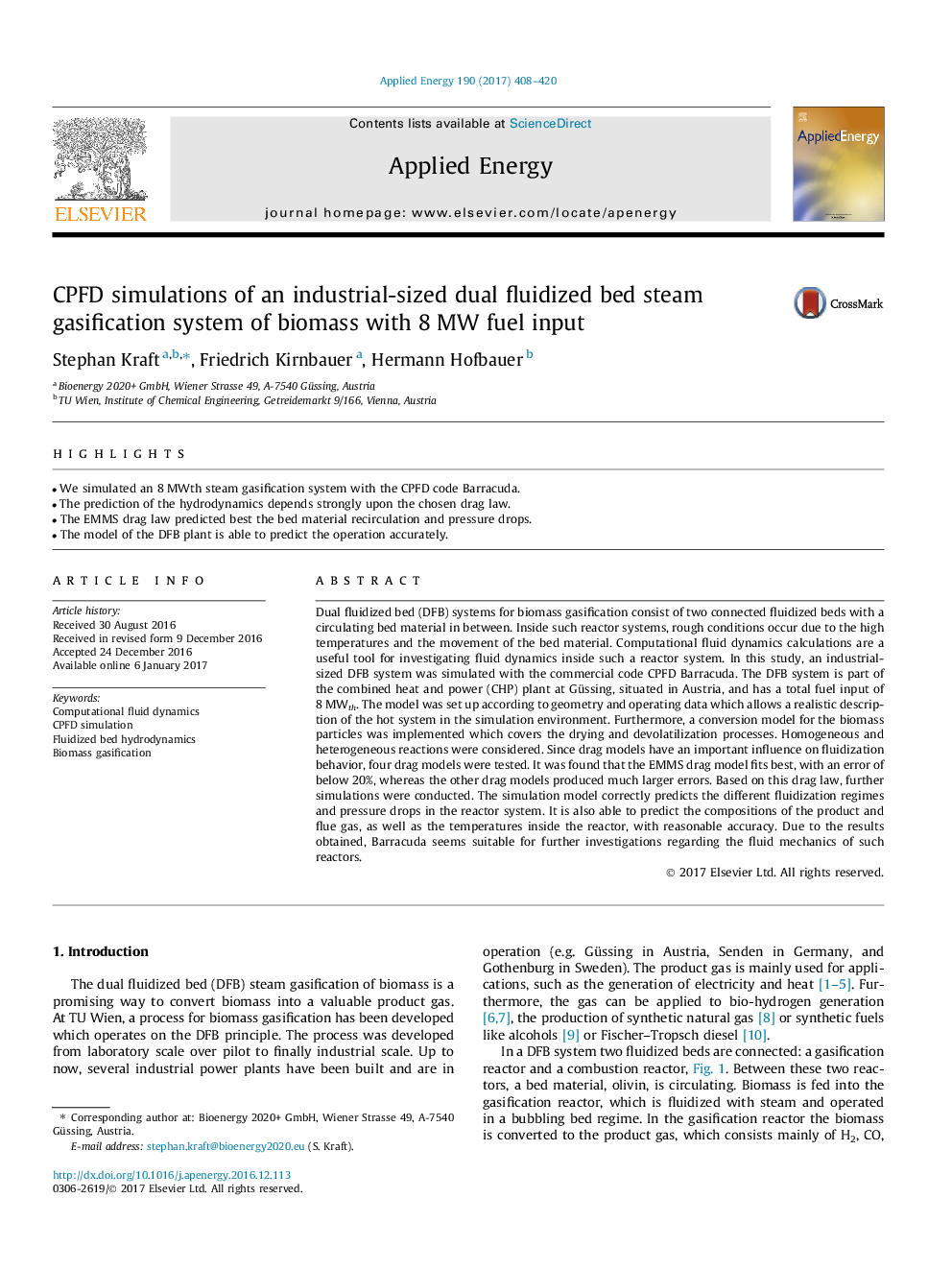| کد مقاله | کد نشریه | سال انتشار | مقاله انگلیسی | نسخه تمام متن |
|---|---|---|---|---|
| 6478521 | 1428100 | 2017 | 13 صفحه PDF | دانلود رایگان |

- We simulated an 8Â MWth steam gasification system with the CPFD code Barracuda.
- The prediction of the hydrodynamics depends strongly upon the chosen drag law.
- The EMMS drag law predicted best the bed material recirculation and pressure drops.
- The model of the DFB plant is able to predict the operation accurately.
Dual fluidized bed (DFB) systems for biomass gasification consist of two connected fluidized beds with a circulating bed material in between. Inside such reactor systems, rough conditions occur due to the high temperatures and the movement of the bed material. Computational fluid dynamics calculations are a useful tool for investigating fluid dynamics inside such a reactor system. In this study, an industrial-sized DFB system was simulated with the commercial code CPFD Barracuda. The DFB system is part of the combined heat and power (CHP) plant at Güssing, situated in Austria, and has a total fuel input of 8Â MWth. The model was set up according to geometry and operating data which allows a realistic description of the hot system in the simulation environment. Furthermore, a conversion model for the biomass particles was implemented which covers the drying and devolatilization processes. Homogeneous and heterogeneous reactions were considered. Since drag models have an important influence on fluidization behavior, four drag models were tested. It was found that the EMMS drag model fits best, with an error of below 20%, whereas the other drag models produced much larger errors. Based on this drag law, further simulations were conducted. The simulation model correctly predicts the different fluidization regimes and pressure drops in the reactor system. It is also able to predict the compositions of the product and flue gas, as well as the temperatures inside the reactor, with reasonable accuracy. Due to the results obtained, Barracuda seems suitable for further investigations regarding the fluid mechanics of such reactors.
Journal: Applied Energy - Volume 190, 15 March 2017, Pages 408-420